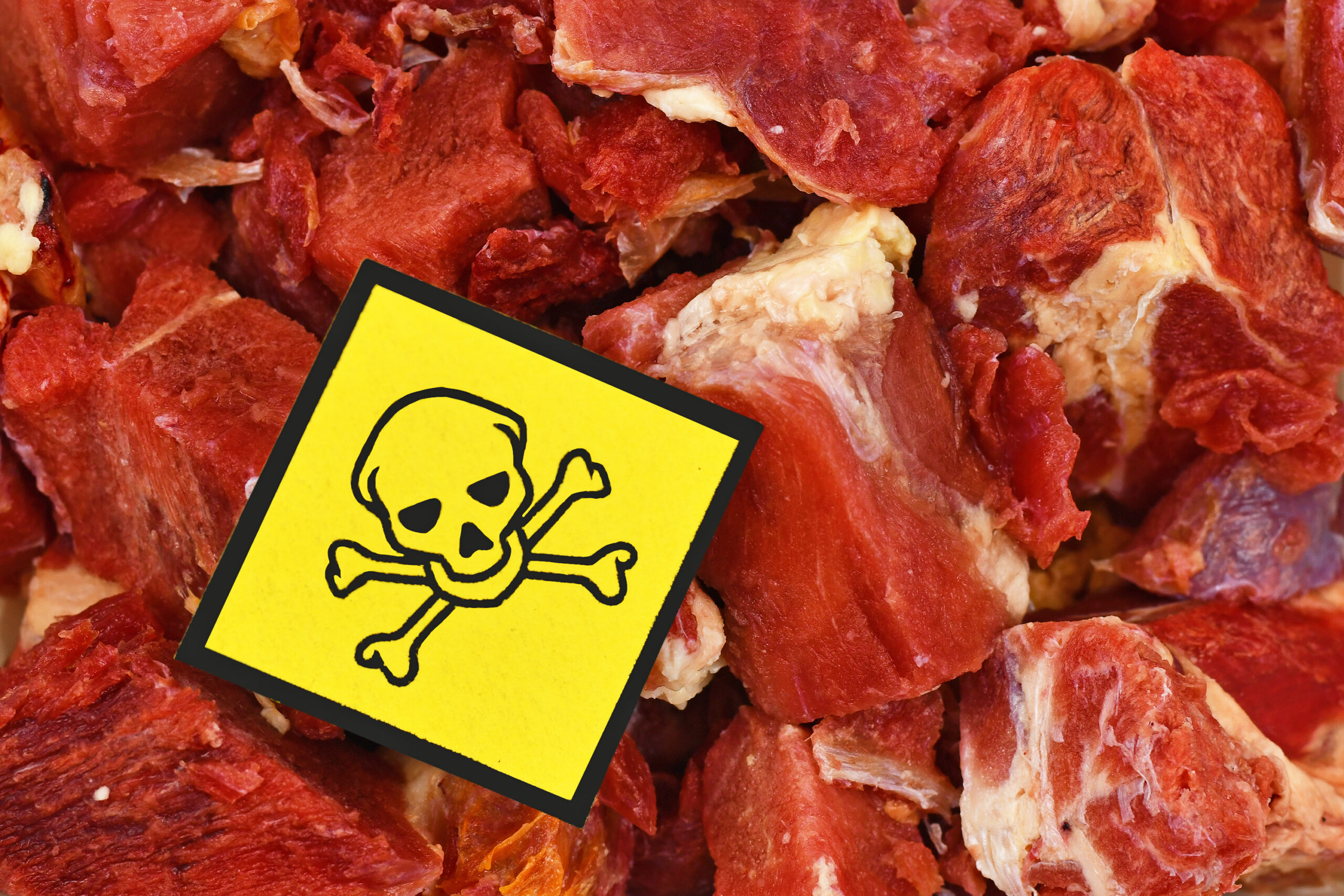Table of Contents

Upset stomachs, urgent trips to the restroom, even hospitalizations ― food poisoning is the unpleasant specter that lurks behind many a meal.
When fingers start pointing, they often land squarely on a slab of undercooked chicken or questionable ground beef.
But is vilifying meat really fair play? Let's chew on the facts.
A Microscopic Menace
It's true, pathogens like E. coli, Salmonella, and Campylobacter find cozy homes in raw and undercooked meats. Unscrupulous factory farming practices set the stage for these gut-wrenching gate crashers to proliferate unchecked.
Add improper storage or handling into the mix, and you've got a recipe for gastrointestinal disaster.
But here's the rub: plants can also pick up some seriously unsavory hitchhikers.
The common thread isn't the food itself, but the journey from farm to fork. Contaminated irrigation water, improper composting, unwashed hands ― these oversights can spell trouble for anything destined for dinner. When we zoom out, meat's role looks more circumstantial than causal.
Risky Business
Still, there's no denying that animal products pose some unique challenges. Pathogens like Listeria monocytogenes adore the moist, protein-rich real estate of deli meats and soft cheeses.
Unrefrigerated eggy picnic fare proves irresistible to Staphylococcus aureus. Improperly handled seafood can pick up Vibrio faster than a fiddler crab.
But risk exists on a spectrum, mediated heavily by how carefully a food is sourced and prepared. Pasture-raised, heritage breed animals boast heartier immune defenses than cramped conventionally-raised counterparts.
Scrupulous sanitation, proper refrigeration, and cooking temps transform hazardous cuts into perfectly safe sustenance.
And when it comes to food poisoning defense, robust gut health is the unsung hero. A thriving microbiome, fortified by fermented foods and ample fiber, can neutralize many stray pathogens before they wreak havoc. Meat, particularly nose-to-tail eating, may actually provide some uniquely beneficial compounds for keeping gut guardians well-fed.
Beyond the Butcher Block
Painting meat as the singular bogeyman of foodborne illness ignores the many accomplices that can turn any ingredient treacherous in the wrong hands. Mycotoxin-laced grains, virus-contaminated produce, even herbal supplement misidentification ― these often fly under the food safety radar.
The truth is, no food group exists in a vacuum. The riskiest burger is likely the one served with a heaping side of unwashed lettuce and a tall glass of untreated water.
Food poisoning isn't a meat problem. It's a food system problem, compounded by subpar sanitation, reckless agricultural practices, and regulatory lapses.
So how do we navigate this microbial minefield? By prioritizing transparent sourcing, scrupulous hygiene, proper storage, and appropriate cooking methods.
Seeking out pastured, heritage meats handled by reputable purveyors. Relegating the riskiest cuts ― ground meats, raw milk cheeses ― to occasional indulgence. Eating a wide variety of fiber-rich whole foods to cultivate a resilient gut.
The goal isn't to demonize, but to discern. To approach each ingredient with care and context. With a few savvy precautions, there's no reason why meat can't be a safe, even health-supportive player on the plate.
AD
Most Recent
AD
